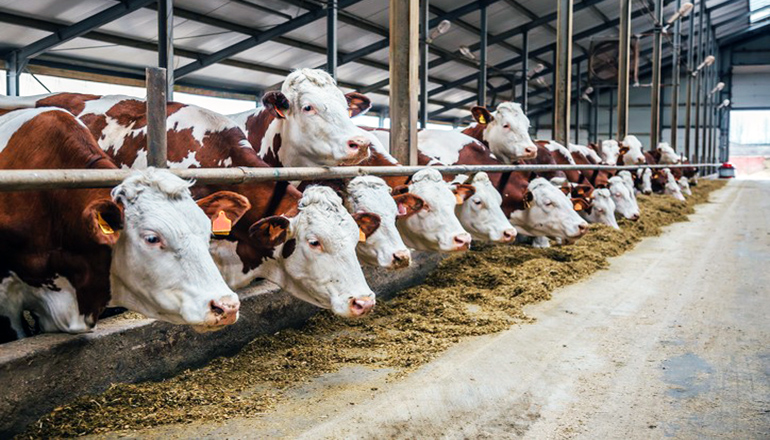Farmers hearing beef focus talks at the Missouri Livestock Symposium will take home tips to use. Beef is just one track in the annual meeting, Dec. 6-7 in Kirksville.
Eric Bailey and Jordan Thomas, University of Missouri Extension beef specialists, usually team up to teach heifer care. Now they’ll tell about feeding and breeding cows as well.
Bailey dispels feeding myths about calving.
Thomas shifts from reproduction themes for Show-Me-Select heifers to the management of all cows.
There’s more. David Lalman, Oklahoma State University, talks about cow size. That affects upkeep costs and hits return per cow. Lalman, who graduated from MU, knows Missouri cows. He’s seen changes in cow size and knows the research.
All speakers focus on profits in Missouri’s beef herd.
Missouri ranks No. 3 in cow numbers. But based on cows per acre, Missouri is No. 1, Thomas says. A profitable enterprise this big helps the whole state.
Farmers attending the meeting should bring a notebook, advises Zac Erwin, MU field specialist, Kirksville. “More tips will be given than can be recalled a day later.”
Erwin manages the program along with farmer Garry Mathes, who leads the planning committee. They keep it rural.
Nutritionist Bailey may start on the myth that cutting feed slows unborn calf growth. Producers think less feed makes for easy calving. The opposite happens. An underfed heifer may not have the energy to push her calf out at birth. That makes more “pulled calves.”
Bailey says a pregnant heifer, still growing, needs feed for growth plus feed for her unborn calf.
By December, spring-calving cows may be on poor rations, if they aren’t grazing stockpiled pasture. Instead, they may be on poor-quality hay. Diets may need supplements.
Thomas, MU Extension reproduction specialist, takes a broad view. Farmers should know where every cow ranks on profits in their herds, but few keep detailed records. When tough times hit and a herd needs culling, rankings assure the losers, not winners, are sold.
He says, “Most industries keep records of profits and losses. Too few herd owners do that.” At Show-Me-Select heifer sales, Thomas sees both buyers and sellers who benefit from quality beef.
Both MU specialists promote the SMS heifer program. It teaches development and genetics in replacements. That adds calving ease to benefits. Well-managed cows stay in herds longer.
Bailey notes that too many cows fall out of their herd after five years.
“That’s three calves at best. It takes five or six calves before profits kick in.”
The symposium starts at 4 p.m. on Friday, Dec. 6, and runs through Saturday. Opening night starts with a beef dinner.
Temple Grandin, famous for animal welfare work, returns for the keynote speech Friday night. The focus teams, from horses to goats, are Saturday.
All is free, with no preregistration. There’s too much to tell, but the trade show is worth the trip. Details are at www.MissouriLivestock.com or from MU Extension in Adair County, 660-665-9866.







